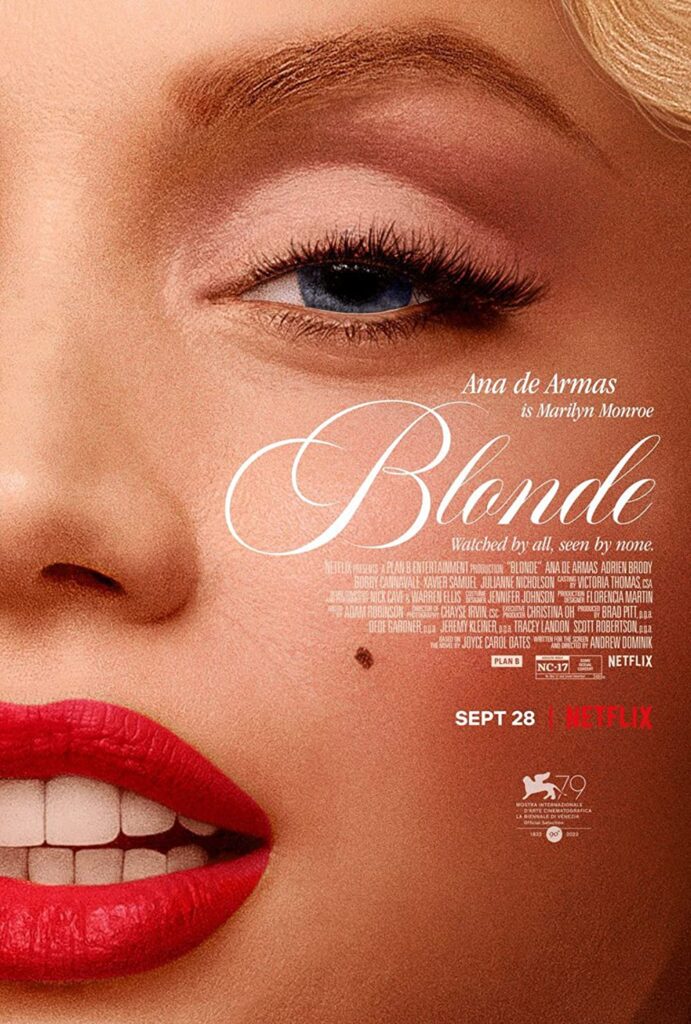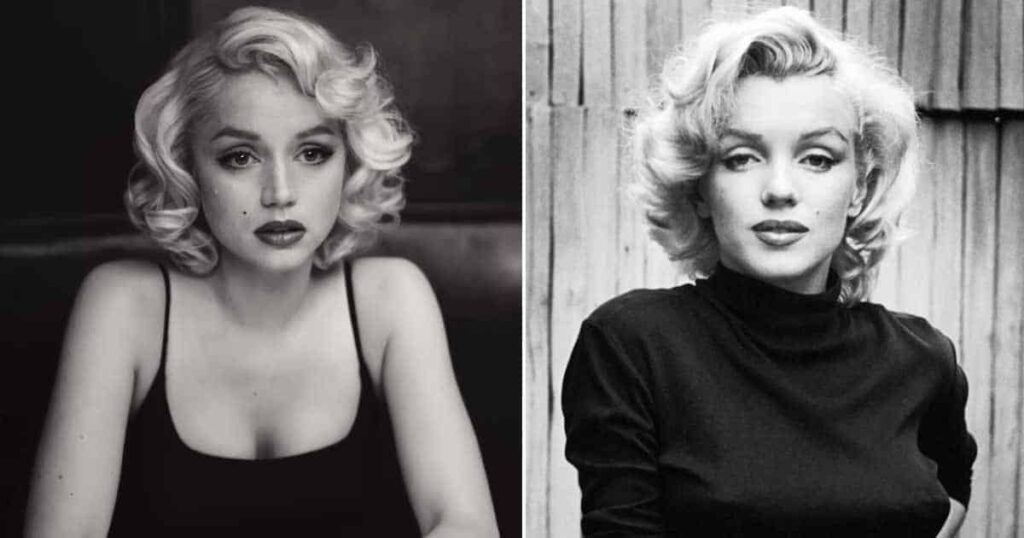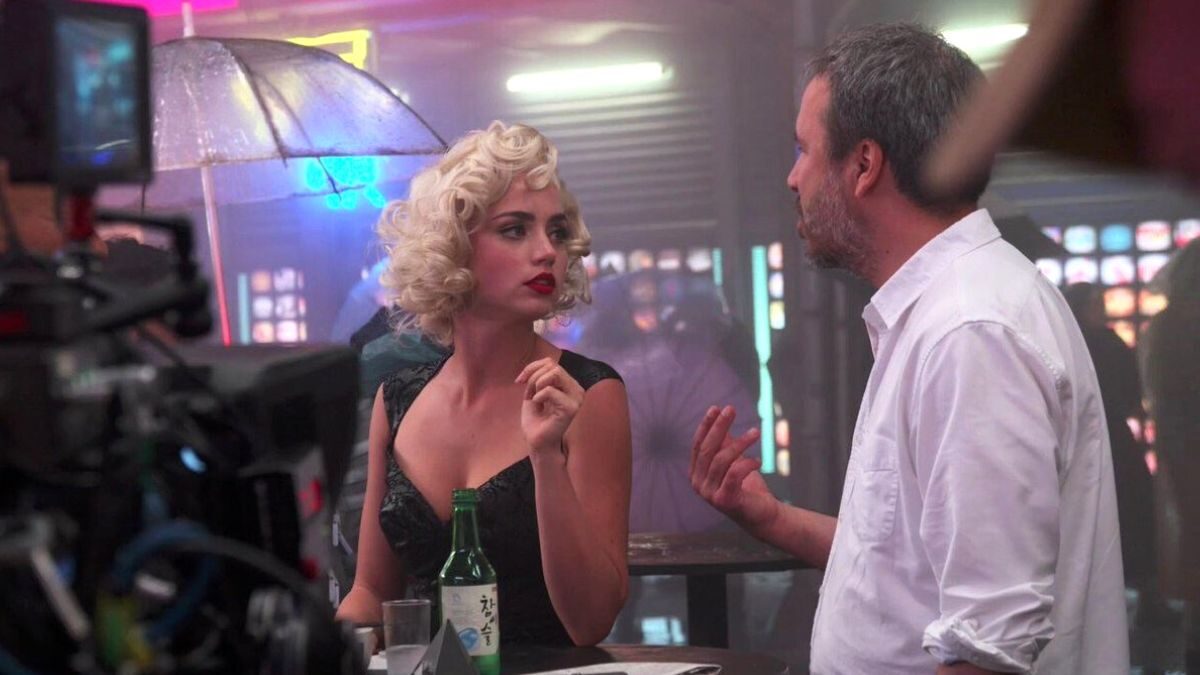
Written by Roberto Leal
“The problem with Marilyn playing dumb blonde roles is she’s not dumb or a blonde” —Arthur Miller, Playwright
Ana de Armas has clearly and undeniably nailed down the coveted pole position for the for Oscar race for Best Actress. The talented, beautiful, Cuban-born de Armas delivers a stunning portrayal of Marilyn Monroe that is at once harrowing, compassionate, heart-breaking, nuanced, at times painful to watch and emotionally courageous. Ana de Armas has laid the foundation for this ground-breaking and controversial performance with critically acclaimed roles in her previous films, Knives Out, in which she plays a humble caregiver, the latest Bond girl in No Time to Die and a tough, kickass CIA agent in The Gray Man. But in Blonde, de Armas not only carries the film on her slender shoulders, she elevates the entire film to award-winning heights which in turn required her to extend her emotional acting range to newer, deeper and darker regions.
The Film Auteur’s Vision

The great Swedish filmmaker Ingmar Bergman, who gave us classic films like Persona, The 7th Seal, and Wild Strawberries, observed that sitting in a darkened theater and watching the mesmerizing flickering images dance on a movie screen is the closest thing to the dream state. Andrew Dominik, the director of Blonde and noted for his avant-garde film, The Assassination of Jesse James by the Coward Bob Ford, masterfully applies his auteurship skills to his vision of Blonde, which is based on the highly fictionalized, 1999 novel of Marilyn’s life by the author, Joyce Carol Oates.
In Blonde Dominik has created a surreal journey through the catacombs of Marilyn Monroe’s tortured inner psyche, as Norma Jean Baker struggles with the manufactured Hollywood identity of Marilyn Monroe that inhabits her body, mind and soul. In de Armas, Dominik has found the perfect vessel to bring his vision to life on the screen.
Dominik uses dark, muted light and shadows to convey an ethereal, dream-like tone that pervades the film often blending and mixing reality and nightmarish sequences with delusional fantasies.
Netflix, in a rare move, gave Dominik carte blanche to realize his vision of the material which contains some strong sexual content that resulted in Netflix getting its first NC-17 rating. But while the sexual content is disturbing, it is not especially graphic and as experienced through the vulnerable eyes of de Armas as Marilyn, it comes across more like pathos than porn. Ana de Armas uses her eyes, face, and inner dialogs between Norma Jean and Marilyn to paint a very textured portrait of the legendary Blonde Bombshell as a complicated, conflicted and misunderstood human being who became a Hollywood myth.
A Fine Supporting Cast
Blonde features an excellent supporting cast, all of whom turn in notable acting performances. However, Lily Fisher (Station 19, Life & Death)) as young Norma Jean and Julianne Nicholson (August: Osage County, Black Mass) as Gladys Baker, Marilyn’s mentally unstable, delusional and often abusive mother, deserve a special shout-out for their fine work in the opening scenes of Blonde that depict, with often unsettling detail, the genesis of Norma Jean /Marilyn Monroe’s journey.
Fisher has a very unforgettable and poignant scene when she is shuffled off to an orphanage and protests in a quiet, haunting, plaintive voice: “But I’m not n orphan.” Nicholson’s riveting performance of Gladys’s descent into utter and complete madness is a disquieting and viscerally frightening experience to behold.
A Cinematic Triumph for Ana de Armas
But in the final analysis, Blonde is all Ana de Armas. Her performance is like a great concert pianist playing George Gershwin’s Rhapsody in Blue. She commands the attention of the camera. You can’t take your eyes off of her. She draws you into the story and demands you watch, listen and try to understand her pain. The camera loves de Armas in much the same way it loved Marilyn Monroe, who was beyond a doubt the most photogenic Hollywood movie star of all time.

Ana de Armas’s physical resemblance to Monroe is obvious. She worked diligently with an accent coach to diffuse her lovely Cuban accent and recreate Marilyn’s speaking voice. Her Cuban accent slightly betrays her only once or twice on certain words and did not detract from her performance at all.
In fact, it was a bit of unintentional irony that de armas, a Latina, was cast to play Marilyn Monroe. In real life, Monroe kept her Mexican birth heritage (her mother, Gladys, was born in Mexico) a professional secret because of pressure from the Hollywood studio executives who did not want their valuable All-American “product” to be tainted with a Hispanic background. So, in a karmic twist of fate, de Armas is in reality the perfect actress to portray Marilyn Monroe.
Ana de Armas’s star power keeps intensifying with each new challenging role. After her brilliant star turn in Blonde the only question remaining for de Armas is what designer dress this gorgeous and talented Latina will be wearing during her red-carpet interviews on her way to receiving her many well-earned and richly deserved acting awards for her role in this film.
BLONDE
Director: Andrew Dominik
Stars: Ana de Armas, Lily fisher, Julianne Nicholson
Distributor: Netflix
Blonde is currently streaming on Netflix.



